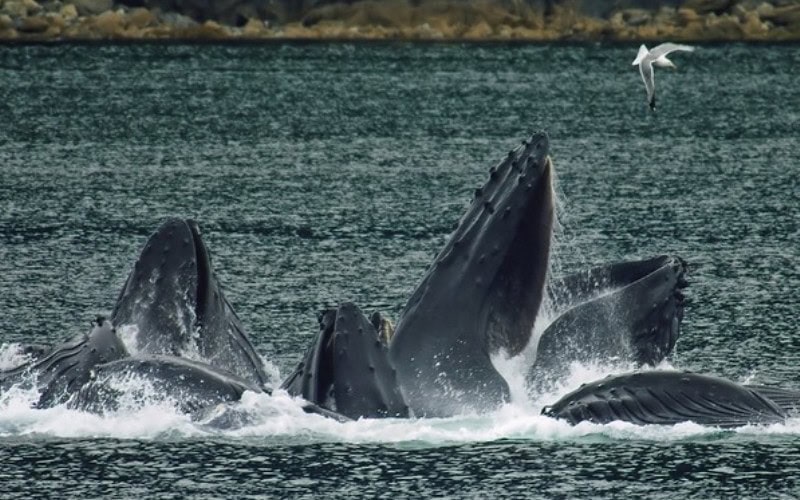Washington: Since migrating animals are shared heritage, a new study has noted that tracking marine migrations across geopolitical boundaries can contribute to their conservation.
The study uses tracking data for 14 species of migratory marine predators, from leatherback turtles to blue whales and white sharks, to show how their movements relate to the geopolitical boundaries of the Pacific Ocean.
The results provide critical information for designing international cooperative agreements needed to manage these species.
Daniel Costa, co-author said, “If a species spends most of its time in the jurisdiction of one or two countries, conservation and management is a much easier issue than it is for species that migrate through many different countries.”
“For these highly migratory species, we wanted to know how many jurisdictional regions they go through and how much time they spend in the open ocean beyond the jurisdiction of any one country,” Costa added.
Under international law, every coastal nation can establish an exclusive economic zone (EEZ) extending up to 200 nautical miles from shore, giving it exclusive rights to exploit resources and regulate fisheries within that zone. The high seas beyond the EEZs are a global commons and are among the least protected areas on Earth. Discussions have been underway at the United Nations since 2016 to negotiate a global treaty for conservation and management of the high seas.
First author Autumn-Lynn Harrison said, “I wanted to see if we could predict when during the year a species would be in the waters of a particular country. Some of these animals are mostly hidden beneath the sea, so being able to show with tracking data which countries they are in can help us understand who should be cooperating to manage these species.”
Harrison also began attending meetings on issues related to the high seas, which focused her attention on the time migratory species spend in these relatively unregulated waters. “Figuring out how much time these animals spend in the high seas was directly motivated by questions I was being asked by policymakers who are interested in high seas conservation,” she said.
The TOPP data set, part of the global Census of Marine Life, is one of the most extensive data sets available on the movements of large marine animals. Many of the top predators in the oceans are declining or threatened, partly because their mobility exposes them to a wide array of threats in different parts of the ocean.
White sharks are protected in the U.S. and Mexican waters, but the TOPP data shows that they spend about 60 per cent of their time in the high seas. Pacific bluefin tuna, leatherback turtles, Laysan albatross, and sooty shearwaters all travel across the Pacific Ocean during their migrations.
International cooperation has led to agreements for managing some of these migratory species, in some cases through regional fisheries management organisations. The Inter-American Tropical Tuna Commission (IATTC), for example, oversees conservation and management of tunas and other marine resources in the eastern Pacific Ocean.
The first session of a U.N. Intergovernmental Conference to negotiate an international agreement on the conservation of marine biological diversity beyond areas of national jurisdiction will be held in September.
“These migratory species are a shared heritage, and this paper shows their international travels better than ever before,” Harrison said. “The first step to protect them is knowing where they are over their annual cycle and promoting international agreements to manage the threats they may face across several countries.”
[source_without_link]ANI[/source_without_link]

